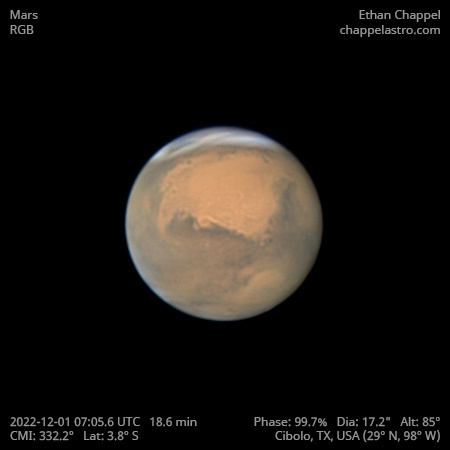
Mars UTC
CM1: 332.20°
CLat: -3.80°
Turbulent seeing on December 1st, 2022, but the high surface brightness of Mars makes it easier to cut through the atmosphere and create a nice image.
Opposition is on December 8th, but its closest approach to Earth was a few hours before this image. Opposition and closest approach would be at the same time if both planets had perfectly circular orbits. However, Mars' orbit is highly elliptical compared to Earth's, which can shift its closest approach by over a week before or after opposition. It also means distance between closest approaches to Earth range from less than 55 million km to over 100 million km. This year's closest approach is 81 million km.
Mars' elliptical orbit has effects on its weather. Dust storms tend to kick up most often when it is closer to the Sun, as was seen in 2018 when a global dust storm obscured what would've been our best view of the planet in 15 years. When Mars is farther from the Sun, dust storms are replaced by clouds made of frozen carbon dioxide (dry ice).
Astro-Physics Advanced Convertible Barlow
Celestron EdgeHD 14
QHY 5III200M
iOptron CEM70
ZWO EFW 8 x 1.25″/31
Licensed under Creative Commons Attribution-NonCommercial 4.0 International (CC BY-NC 4.0)